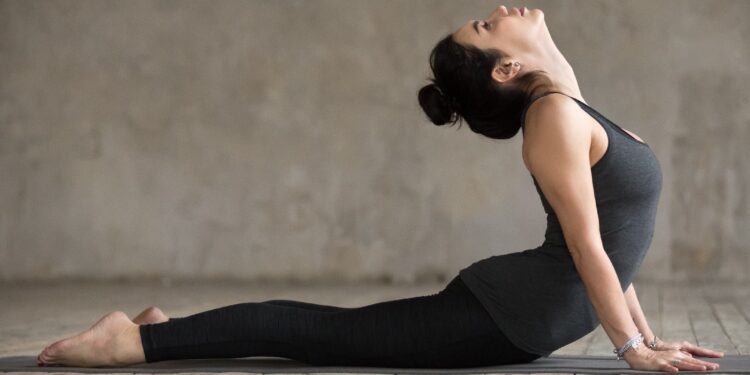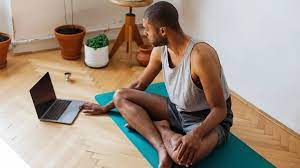Is your back giving you problems? The lower half of your body might not be blessed with the same amount of symmetry and natural balance as the rest of your appendages, but that doesn’t mean it can’t perform its share of supporting duties. All it needs is a little TLC to regain optimal alignment, relieve built-up tension, and restore mobility. Achy lower back pain? Are you getting strained by daily activities like gardening or playing sports? Do hip problems keep interfering with your active routine? If any or all of these sound familiar, you’re probably suffering from one or more of the following signs of chronic back pain:
Don’t forget to stretch!
Yoga is a great way to keep your body flexible and limber, but you should also incorporate some light aerobic activities into your routine. Yoga requires you to be very still, whereas cardio does the exact opposite, so the two don’t go hand in hand. When you do incorporate some low-intensity movement into your routine, choose exercises that are gentle on your body — and not just your lower half. By keeping your joints limber and fluid, you’ll keep your back from getting too stiff, putting you at increased risk of injury. If you don’t stretch properly, you’ll create unnecessary wear and tear on your muscles and ligaments, which can lead to pain and stiffness down the road. Stretch out your upper body and limbs too, to help your back get the most out of its muscles.

Try the wheel roll-out
If you’re struggling with lower back pain, you might want to try using an office chair with wheels instead of a regular desk chair. With the wheels underneath you, you’re forced to use different muscles to maintain balance, which can help ease lower back pain. You can also try rolling out in the middle of the day between meetings or while waiting for your desk to clear up. It doesn’t have to be a full-blown wheel rollout, either. A few slow turns around your desk will get the job done just as well. To make wheel rollout even more effective, try rolling your chair away from you to increase the challenge. You may also want to try using a rolled-up towel under your bottom to further increase the difficulty.
If you’re struggling with lower back pain, you might want to try using an office chair with wheels instead of a regular desk chair. With the wheels underneath you, you’re forced to use different muscles to maintain balance, which can help ease lower back pain. You can also try rolling out in the middle of the day between meetings or while waiting for your desk to clear up. It doesn’t have to be a full-blown wheel rollout, either. A few slow turns around your desk will get the job done just as well.
Strengthen your core
Your core includes your abs and lower back muscles, but if you have chronic back pain, you’re probably including other muscles in your abdominal workout. As your back pain progresses and you lose mobility, you’ll need to work even harder to maintain the same posture. If you don’t, you could aggravate and possibly even spur the injury. Start with a basic plank and work your way up to a full-blown push-up. If you’re having trouble with either of those exercises, try holding each one for as long as you can without letting go. The longer you can hold each one, the better shape your core muscles will be in when you’re done. Furthermore, add some basic exercises to your routine that target your core even when you’re not thinking about lowering your back. If you can incorporate any of these into your daily routine, you’ll strengthen your core even when you’re not thinking about it.
Rest your spine with twist poses
Most of the poses you do in yoga are great for building strength and flexibility, but they can also relieve tension and help you relax. By holding each pose for as long as you can without becoming dizzy or nauseated, you’ll release built-up tension in your muscles and spine, which can ease lower back pain. You don’t have to do each pose for long periods of time, either. You can also break the poses into five- or ten-second stretches, allowing you to practice each pose over and over again until you feel an overall sense of relaxation. If you’re struggling with lower back pain, you might want to try doing a set of backbends without resting between each pose. You can also try holding each pose for as long as you can without letting go until you feel a sense of relaxation.
Standing poses can help relieve tension
These poses are great for loosening up tense muscles and easing lower-back tension, but they can also help you maintain proper posture. If you’re prone to back pain, you should regularly challenge yourself to stand with more ease and less force. When that time comes, choose one of the following poses: – Warrior 1: This pose is a mix between a standing and a side bend, forcing you to engage your core muscles as you use your arms to help lift your body up. – Downward-Facing Dog: With your back pressed against the ground and your arms raised overhead, this pose forces you to keep your back straight. – Chair Pose: This pose is similar to a push-up in that you’re keeping your back straight by pressing your hands into the ground with your legs straight out in front of you.
Final Words
The lower half of your body doesn’t get the same amount of symmetry as the rest of your appendages, but that doesn’t mean it can’t perform its share of supporting duties. All it needs is a little TLC to regain optimal alignment, relieve built-up tension, and restore mobility. Yoga is a great way to keep your body flexible and limber, but you should also incorporate some light aerobic activities into your routine. Yoga requires you to be very still, whereas cardio does the exact opposite, so the two don’t go hand in hand. When you do incorporate some low-intensity movement into your routine, choose exercises that are gentle on your body — and not just your lower half.
By keeping your joints limber and fluid, you’ll keep your back from getting too stiff, putting you at increased risk of injury. If you don’t stretch properly, you’ll create unnecessary wear and tear on your muscles and ligaments, which can lead to pain and stiffness down the road. Your core includes your abs and lower back muscles, but if you’re having trouble with back pain, you might want to include other muscles in your abdominal workout. Start with a basic plank and work your way up to a full-blown push-up. You don’t have to do each pose for long periods of time, either. You can also break the poses into five- or ten-second stretches, allowing you to practice each pose over and over again until you feel an overall sense of relaxation.
Yoga is a great way to keep your body flexible and limber, but you should also incorporate some light aerobic activities into your routine. The lower half of your body doesn’t get the same amount of symmetry as the rest of your appendages, but that doesn’t mean it can’t perform its share of supporting duties. All it needs is a little TLC to regain optimal alignment, relieve built-up tension, and restore mobility. Your core includes your abs and lower back muscles, but if you’re having trouble with back pain, you might want to include other muscles in your abdominal workout.











